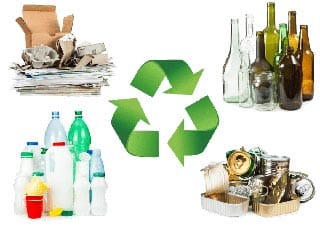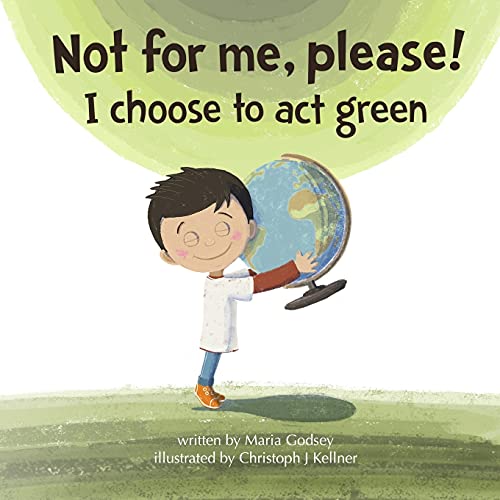
Compost Recycling
Is Composting a Form of Recycling?
![]() As the worlds waste disposal and landfill sites are filling up, compost recycling is a way of recapturing the material or energy value of the item being recycled for an alternative use.
As the worlds waste disposal and landfill sites are filling up, compost recycling is a way of recapturing the material or energy value of the item being recycled for an alternative use.
Garbage, trash, waste, garbage, junk and refuse are all names we use for the “stuff” that we don’t want, or is no longer of use to us in its current form. But waste isn’t waste at all – it’s actually a resource waiting to be transformed into something new.
Composting and recycling are two crucial practices that play a crucial role in reducing unwanted waste and protecting the environment. While people talk about composting and recycling as if they are the same thing, but there are distinct differences between the two terms.
Recycling means to reuse something over and over again dealing with a wider range of materials to create new products. Composting focuses on organic materials to produce fertilizers. Both processes share the same fundamental goal of converting unwanted waste into a valuable resource but they do it in very different ways.

The law of conservation of matter states that during the processes of composting and recycling, matter can neither be created nor destroyed, but can only be changed into another form.
Recycling is often viewed as a resource conservation activity, since we can conserve the original resource simply by recycling it. Certain materials, such as glass and metals, can be infinitely recycled into new products.
Composting is nature’s way of recycling and gardeners have used compost for centuries either in the fields or in their gardens. It is basically the biological process which occurs when organic matter is broken down by micro-organisms.
Why is composting important? Well, beyond its obvious environmental and energy saving attributes, the benefits of composting are huge. Composting helps individuals take direct action in reducing waste and creating a dark, rich soil amendment which can be used to improve soil structure that can improve plant growth and health.
When we talk about recycling, visions of collecting and processing waste materials, such as plastics, paper, carboard and various metals often come to mind for the purpose of using them to create new products and reduce the amount of natural resources consumed.
For example, newspapers are recycled to make new newspapers. Aluminium drinks cans are used to make new drinks cans. Glass bottles and jars are used to make new glass bottles and jars, etc. Then there are many different reasons why recycling unwanted items makes sense and not just to save energy, conserve resources, and protect the environment.
Compost Recycling is a Green Solution for Waste Reduction
There is a lot you can do to save energy, conserve resources, and protect the environment. When you compost and recycle you keep natural and reusable materials out of landfills, rivers, and streams, reduce our dependence on new raw materials, save energy, and improve our soils.
Then both composting and recycling have numerous environmental benefits such as:
- 1. Waste Reduction – By composting food scraps and yard waste, we can significantly reduce the amount of organic material that ends up in landfills. Recycling also helps to divert waste from landfills and reduce the need for new materials.
- 2. Conservation of Resources – Recycling saves natural resources by reducing the demand for raw materials extracted from the earth. Composting also helps to conserve resources by providing a natural fertilizer that can replace synthetic fertilizers.
- 3. Greenhouse Gas Reduction – Landfills are major sources of methane, a potent greenhouse gas. By composting food scraps and yard waste, we can reduce methane emissions. Recycling also helps to reduce greenhouse gas emissions by reducing the need for energy-intensive manufacturing processes.
- 4. Soil Health Improvement – Compost is a valuable soil amendment that improves soil structure, nutrient content, and water retention. This benefits plants and helps to prevent soil erosion.
- 5. Energy Conservation – Recycling often requires less energy than manufacturing new products from raw materials. This helps to conserve energy and reduce greenhouse gas emissions.
But before we use compost recycling as our answer to everything, there are simple things we can do to reduce our waste. Clearly then, our first priority should be in reducing the amount of stuff we consume and then casually throwaway.
How Does Compost Recycling Help the Environment
Compost recycling helps the environment in many different ways. The benefits are numerous and far-reaching. When organic waste ends up in landfills, it decomposes without oxygen, producing methane – a greenhouse gas 25 times more potent than carbon dioxide.
Aerobic composting prevents this through the work of microorganisms, insects, and other decomposers that break down organic matter into its basic components ensuring organic matter decomposes aerobically, significantly reducing methane emissions. Then composting is nature’s way of recycling organic materials through decomposition.
Unlike traditional recycling, which requires industrial processes and energy input, composting can happen naturally with minimal human intervention. The process requires only four basic ingredients: green materials (nitrogen-rich), brown materials (carbon-rich), water, and air. When these elements are combined in the right proportions, nature does the rest.
When combined with traditional recycling, these practices can dramatically reduce our environmental footprint. Recycling conserves natural resources by reducing the need for new materials to be extracted from the earth. It also reduces energy consumption, and minimizes pollution from manufacturing new products.
But there are two important sub categories within recycling: item-to-item recycling and downcycling. Item-to-item recycling means that something is recycled back into itself or something very close. For example, a plastic bottle that is recycled back into a plastic bottle. Downcycling on the other hand means that an item has been recycled into something completely different. For example, a plastic bottle recycled into an eco-friendly shopping bag or bin liner.
Then the terms recycling, and downcycling should not be used interchangeably. Recycling is a very broad term we use to describe all those activities related to the reusing of waste items. While downcycling converts waste into products which have a lower value than the original raw material used to produce them. That is the downcycled waste loses certain valuable properties during the recycling process and so is less valuable than the original product.
Combining Composting and Recycling for Maximum Impact
The most effective waste reduction strategy combines both composting and recycling. This dual approach ensures that both organic and inorganic materials are properly managed and repurposed. By implementing both practices, households can divert up to 70% of their household waste from going into landfills.
Unwanted materials which is sent to landfill can potentially stay there forever, whereas materials which are recycled can be turned into new products. Compost recycling reminds us that both recycling and composting basically deals with the same thing. The end of life of the materials and objects we no longer want. Then it is essential that we think about compost recycling as giving new life and a second chance to old or unwanted things.
The Future of Waste Management
As cities and communities around the world face growing waste management challenges, compost recycling are becoming increasingly important. Many municipalities are implementing mandatory composting programs alongside existing recycling initiatives. Some communities are even creating closed-loop systems where organic waste is collected, sorted and recycled.
The future of waste management lies in understanding that waste isn’t waste at all, but a valuable resource just waiting to be transformed into something new. Whether through composting organic materials or recycling manufactured white goods, we all have the power to significantly reduce our environmental impact while creating valuable resources for our communities.
While both composting and recycling activities will contribute to waste reduction, the three key “R” words of: Reduce, Reuse, and Recycle have never been more important. Reduce what we use, reuse it again, or repurposed for a different task and recycle it into something new.
As composting and recycling represent the two sides of the same coin, our ability to transform waste into other resources by combining them together can significantly reduce our waste mountain, create valuable resources, and help build a healthier planet for future generations.
Tutorial Summary
In summary, compost recycling is an essential practice for a sustainable future and while both composting and recycling contribute to waste reduction, they are not the same. Processing different materials through different methods is essential for creating a more sustainable future.
By reducing waste, conserving resources, and improving soil health, these practices can help to protect the environment and create a healthier planet for future generations. It is important to incorporate both composting and recycling into our daily lives to make a positive impact.
Remember, every time you choose to compost or recycle, you’re not just diverting waste from landfills, but you are participating in a crucial cycle of resource conservation and renewal. The choice to compost and recycle is a choice to invest in our planet’s future, one banana peel and cardboard box at a time.
To learn more about how the recycling of organic wastes through composting can provide a range of environmental benefits. Then find the ideal compost recycling book today direct from Amazon and understand how you can reduce air and water pollution by using materials more than once conserving our natural resources.











Please Speak up!
We hope this Compost Recycling Tutorial was useful and informative for you. Are you ready to share your thoughts
and experience with us and many others. Your comments are always welcome, just post them in the section below.
P.S. Don't forget to like, rate, and share this Alternative Energy Tutorials post. Thank you for using our website.